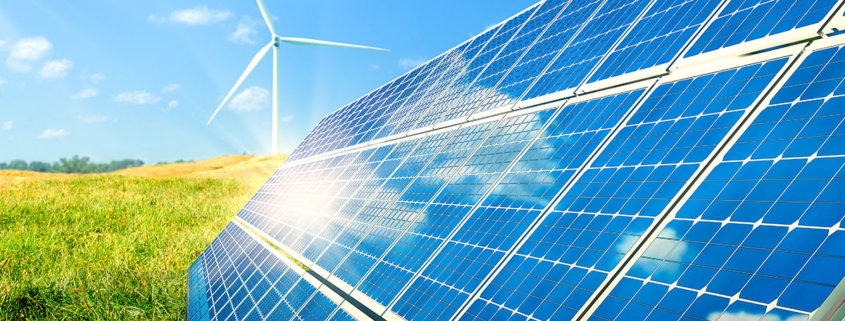Energy-Related Tax Incentives in the Inflation Reduction Act
Energy-Related Tax Incentives in the Inflation Reduction Act
The recently enacted Inflation Reduction Act of 2022 (IRA) may seem overwhelming and complex to business owners and managers. With a wide-range of tax and spending initiatives in the legislation, they’re eager to figure out which opportunities they can take advantage of.
What business executives may not fully realize at first glance amidst the myriad of features is that the IRA includes 11 new programs and 14 extended or expanded energy tax incentives totaling $270 billion. These opportunities are designed to encourage the production and implementation of clean and renewable energy, and are available to businesses.
As financial officers plan their activities to enhance their tax positions, here are some of the features of the IRA that are worth considering.
Who Can Benefit
Three groups of taxpayers can benefit from the IRA’s energy and climate provisions:
1) Energy Sector Businesses. The new law extends and expands several widely-used tax credits for renewable energy projects—including both investment tax credits and production tax credits. Some of these credits previously were scheduled to phase out, but the IRA extended them to include projects that start construction before January 1, 2025.
After that date, the law introduces new and expanded clean energy investment and production tax credit programs. These will apply to an even wider range of power generation and storage projects, and will also include various multipliers and added incentives based on a project’s location, employment practices, and other factors. The IRA also incorporates new credits for clean hydrogen production and zero-emission nuclear power generation, as well as a new credit for the manufacture of various clean energy components such as photovoltaic cells, battery cells, and solar and wind energy equipment, provided they are produced in the U.S.
2) Other Businesses. Non-energy businesses can also benefit from the IRA. For example, the new law makes it easier to qualify for the energy-efficient commercial buildings deduction under Internal Revenue Code Section 179D. The law also provides enhanced credits for constructing energy efficient single-family or multifamily housing units. Commercial property owners may also earn credits for installing electric vehicle charging stations. In addition, the IRA increases various other clean energy incentives for businesses, including new credits for electric passenger and commercial vehicles used by a business and credits for the use of biodiesel and other alternative fuels.
3) Individual Taxpayers and Energy Consumers. The IRA extends existing tax credits for the purchase of new hybrid or electric vehicles and adds a new credit for the purchase of used electric vehicles. But new price limits, purchaser income limits, and domestic sourcing tests, which go into effect January 1, 2023, could make it harder to qualify. The new law also expands several programs to encourage more energy efficient buildings, such as the Residential Clean Energy Credit and the Energy Efficient Home Improvement Credit, among others.
Transferability: A Major Enhancement
One of the most consequential features of the IRA is a provision that allows companies that generate more energy-related tax credits than they need to turn those unused credits into cash. Starting January 1, 2023, a company may transfer most unused energy-related tax credits to an unrelated taxpayer in exchange for a cash payment. What’s more, the income from the sale is not taxable to the seller. Naturally, the cost is not deductible to the purchaser, but the recipient can use the credit to reduce its own tax payment.
In the past, companies with excess credits could transfer them only by establishing complex tax equity partnership arrangements with the recipients. The new provision, which applies to nearly all tax credits in the IRA, greatly simplifies the process and enables companies that generate more credits than they need to convert those credits to tax-free income.
Timing, Multipliers, and Other Variables
Many of the new tax credits incorporate multipliers or bonuses that can greatly increase their value. For example, compliance with prevailing wage requirements, the use of apprenticeship programs, and locating projects in low-income or otherwise distressed communities can significantly boost the value of investment or production credits. Companies that plan to take advantage of such tax credits should take careful note of these variables in order to maximize their benefit.
Project timing is also critical. Some of the new or modified incentives go into effect in the 2023 tax year; others apply only to projects that begin after December 31, 2024. In some cases, projects must be launched relatively quickly once IRS guidance is published in order to earn higher incentives.
With so many new and revised regulations, it will take many months for the Internal Revenue Service to define the rules, regulations, and guidance of the IRA. Nonetheless, the Treasury Department is already implementing some of the related regulations, including revised guidance on electric vehicle credits. Other elements of the legislation will only become final after extended public input, review, and revisions.
Be prepared, and avoid uncertainty and confusion! Let the tax professionals at Dembo Jones help you determine how you can best take advantage of the IRA. Give us a call to begin the discussion.
